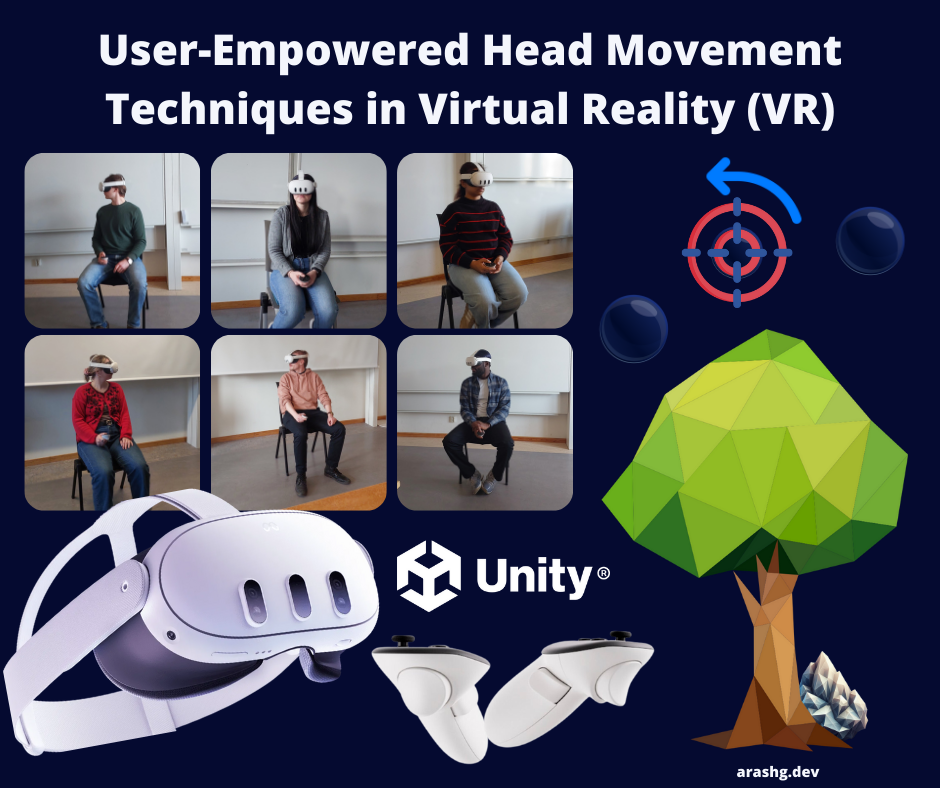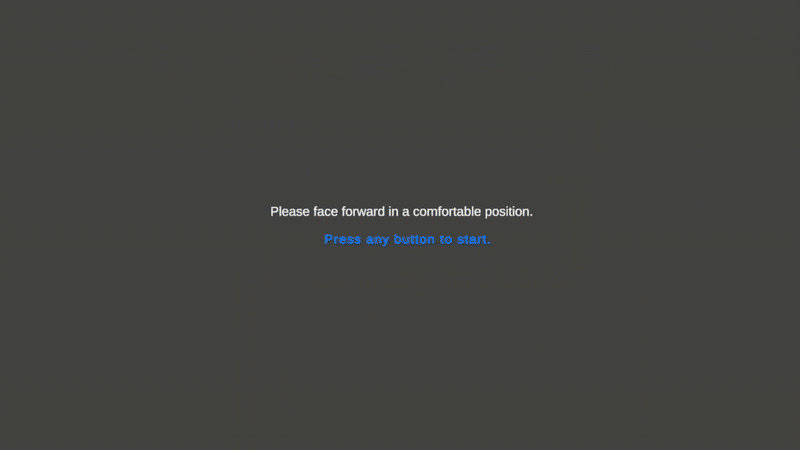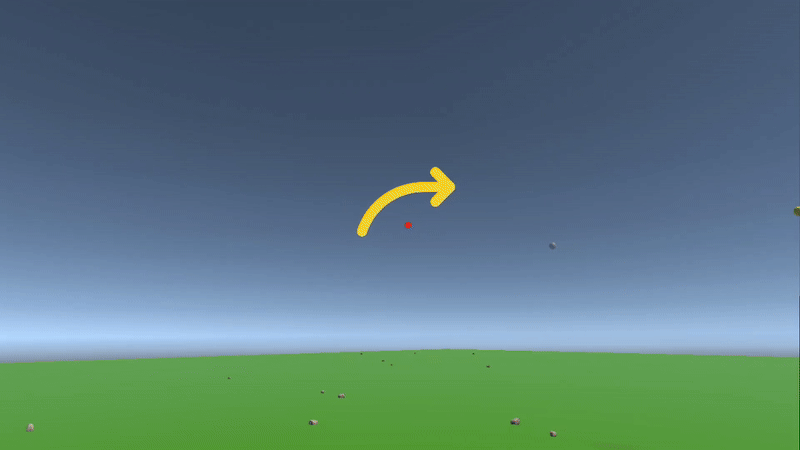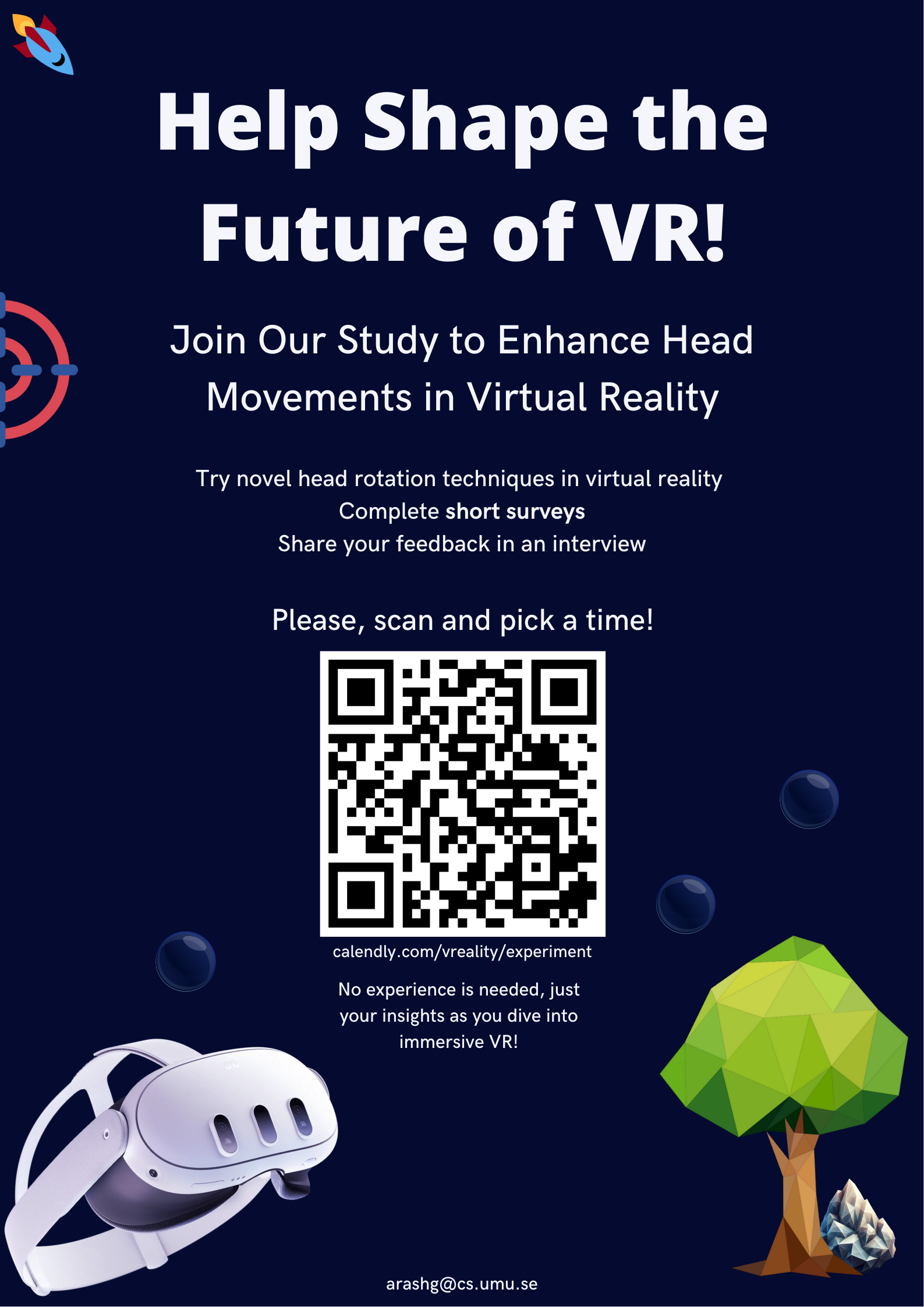User-Empowered Head Movement Techniques in Virtual Reality (VR)

As part of my Master's thesis in Human-Computer Interaction (HCI) at Umeå University, supervised by Prof. Anders Lundström, I explored novel head rotation amplification techniques in Virtual Reality (VR) specifically designed to overcome the challenges posed by physically restricted turning angles in seated VR environments. The project focused on exploring novel head rotation techniques enhancing user comfort, efficiency, and overall interaction experience.
In seated virtual reality (VR), where large physical turns are limited, altering the mapping between physical and virtual movements can amplify head rotation, enabling efficient view control with reduced physical effort. This thesis introduces two amplified head rotation (AHR) techniques for seated VR: the user-empowered Interactive, which affords user-timed switching between high and low gain, and Adaptive, which adjusts gain automatically based on head-motion kinematics. We evaluated both techniques in a mixed-methods study (n = 31), compared with a Static constant-gain baseline (g = 2.5) across a head-pointing task and a 180° rotation task. Both Interactive and Adaptive improved head-pointing performance relative to Static, while increasing physical head movement; cybersickness remained low and virtual–physical heading offsets were generally modest. Qualitatively, participants valued Interactive for the agency and control it afforded. Notably, this control enabled an emergent behavior in which users intentionally reoriented the virtual view via asymmetric rotational gains — a user-initiated redirection strategy we term ViewShift. Adaptive reduced cognitive load but could occasionally misalign with user intent. Together, the findings suggest potential for giving users control over rotational gains and highlight visible, user-centered AHR as an interaction technique for seated VR.
Implemented Prototype in Unity 3D
Techniques Developed
Static Gain (Baseline)
Static amplification: Physical head rotation multiplied by a fixed factor. For example, a 30° turn becomes 60° in VR (gain = 2).
Interactive (User‑Empowered) Gain
Interactive amplification: Users manually toggle between high and 1:1 normal mapping using VR controllers during ballistic (rapid rotation) and corrective phases for higher accuracy.
Adaptive Gain
Dynamic adaptive amplification: Automatic gain adjustment based on head rotation velocity and acceleration to smoothly transition between high gain during ballistic movements and normal gain during precise alignment.
Study Design
We conducted a mixed-methods, within-subjects evaluation comparing three rotational gain techniques for seated VR: Constant (fixed gain 2.5×), Interactive (user-timed switching), and Adaptive (automatic adjustment based on head-motion kinematics).
31 participants performed two tasks (head-pointing and 180° rotation) under all techniques in randomized order.
Metrics Collected
- Task Completion Time: Time required to complete tasks.
- Error Rate: The number of times targets were missed, and the angular deviation from the intended target.
- Accumulated Offset: The overall angular difference between the task's starting and ending positions within the virtual environment.
- Physical vs. Virtual Accumulated head Movement: Accumulated angular head movements were measured in both the physical and virtual environments.
- NASA-TLX: User workload assessment.
- Cybersickness in Virtual Reality Questionnaire (CSQ-VR): Used to assess the level of motion sickness experienced in virtual reality across different techniques.
Usability Questions Regarding
- Comfort and Usability: User comfort levels and intuitive interaction.
- Control and Precision: User comfort levels and the ease of interaction during tasks.
- Naturalness and Applicability: How naturally the techniques felt and how applicable users found them for VR use.
Qualitative User Feedback
- How users experienced amplified head rotation compared to normal 1:1 mapping.
- How head rotation amplification affected users' sense of direction and spatial orientation.
- Preferences between different amplification techniques (interactive vs. adaptive).
- The impact of head rotation amplification on users' sense of immersion in the virtual environment.
Tasks

180° Rotation Task

Small Bubbles Task (90° and 180° Conditions)
Resources & Further Reading
Links
- GitHub Repository: vr-head-rotation-amplification
- React Prototype: rotationgains.netlify.app
Related Papers
- Wang, C. et al. (2023) ‘On Rotation Gains Within and Beyond Perceptual Limitations for Seated VR’, IEEE Transactions on Visualization and Computer Graphics, 29(7).
Contributions: detection thresholds of rotation gains, and applicability. - Langbehn, E. et al. (2019) ‘Turn Your Head Half Round: VR Rotation Techniques for Situations With Physically Limited Turning Angle’, in Proceedings of Mensch und Computer 2019. Association for Computing Machinery (MuC ’19), pp. 235–243.
Contributions: Dynamic gain technique. - Wang, H. et al. (2024) ‘HeadShift: Head Pointing with Dynamic Control-Display Gain’, ACM Trans. Comput.-Hum. Interact. [Preprint].
Study Poster
